TL; DR
- ClipMind offers completely free AI-powered webpage summarization and full editing capabilities without login requirements
- XMind provides classic mind mapping power with an intuitive drag-and-drop interface and extensive template library
- MindMeister excels at real-time collaboration, making it ideal for team projects and educational settings
- Coggle features automatic layout that eliminates manual formatting struggles for absolute beginners
- SimpleMind offers one-time purchase pricing across platforms, avoiding subscription fatigue for new users
Introduction
I remember the first time I tried mind mapping software. I was staring at a blank canvas, overwhelmed by complex menus and unfamiliar terminology. The steep learning curve that beginners face with advanced features almost made me abandon the tool entirely. That experience taught me that the right beginner-friendly software can make all the difference between frustration and productivity.
In 2025, the mind mapping landscape has evolved dramatically. Digital mind mapping tools have transformed to be more collaborative and accessible than ever before, with AI integration revolutionizing how beginners approach visual thinking. This guide cuts through the complexity to show you the 10 most approachable tools that will help you start mind mapping confidently, regardless of your technical background.
What Makes Mind Mapping Software Beginner-Friendly?
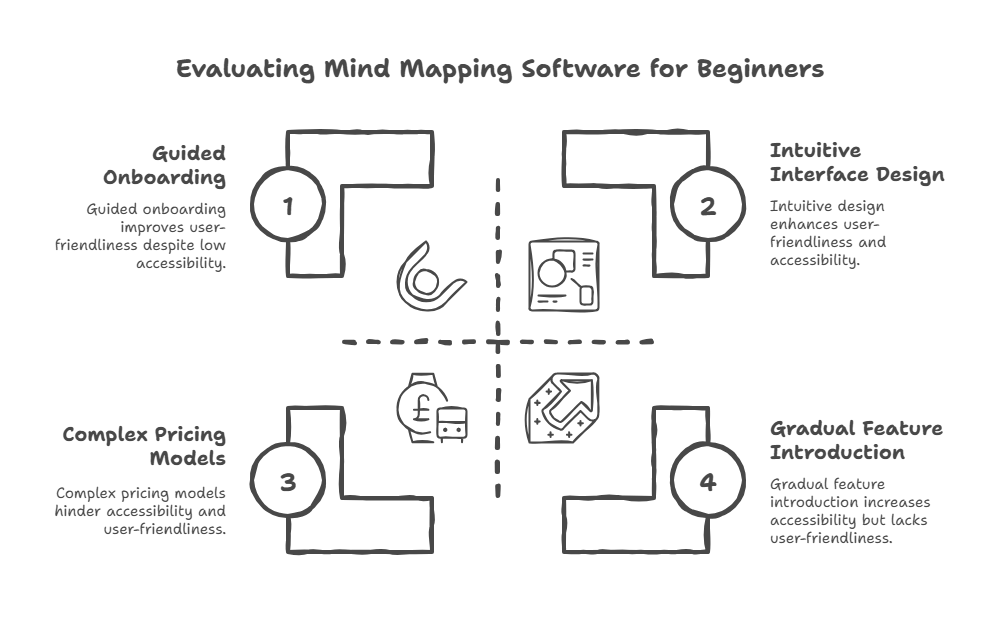
Intuitive Interface Design
The best beginner tools eliminate guesswork through clean, logical layouts. Look for software with minimal toolbar clutter, clear iconography, and straightforward navigation. Tools that prioritize visual cues over text-heavy menus help new users understand functionality without extensive tutorials.
Guided Onboarding and Templates
Quality beginner software provides structured starting points. Experts recommend starting simple with a clear central idea and using keywords or short phrases to keep mind maps effective. Pre-built templates for common use cases like brainstorming, project planning, and note-taking give beginners immediate direction rather than facing empty canvases.
Progressive Learning Curve
The ideal beginner tool introduces features gradually rather than overwhelming users with advanced options. Software that allows users to master basic functions before revealing complex capabilities supports natural skill development. This approach prevents the steep learning curve that can deter new users from adopting mind mapping tools long-term.
Accessible Pricing Models
Financial barriers significantly impact beginner adoption. Tools with generous free tiers or one-time purchases allow users to explore mind mapping without commitment. When evaluating options, consider whether the pricing structure supports learning and experimentation rather than pressuring immediate upgrades.
Comparison Table: Quick Overview of Beginner Tools
| Tool | Best For | Pricing | Free Tier | Learning Curve | Collaboration | Platform |
|---|---|---|---|---|---|---|
| ClipMind | AI summarization & quick starts | Completely free | Full features | ⭐⭐ | Basic | Chrome extension |
| XMind | Traditional mind mapping | Freemium | Limited | ⭐⭐⭐ | Limited | Cross-platform |
| MindMeister | Team collaboration | Subscription | 3 maps | ⭐⭐ | Excellent | Web-based |
| Miro | Creative brainstorming | Freemium | Limited boards | ⭐⭐⭐ | Excellent | Web-based |
| Coggle | Simple web mapping | Freemium | 3 private diagrams | ⭐ | Good | Web-based |
| MindNode | Apple ecosystem | Subscription | Trial | ⭐⭐ | Basic | Apple only |
| SimpleMind | Offline use | One-time purchase | Limited | ⭐⭐ | Limited | Cross-platform |
| Ayoa | AI assistance | Subscription | Limited | ⭐⭐⭐ | Good | Cross-platform |
| Lucidchart | Professional use | Freemium | Limited | ⭐⭐⭐⭐ | Excellent | Web-based |
| Whimsical | Rapid prototyping | Freemium | Limited | ⭐⭐ | Excellent | Web-based |
ClipMind: AI-Powered Simplicity
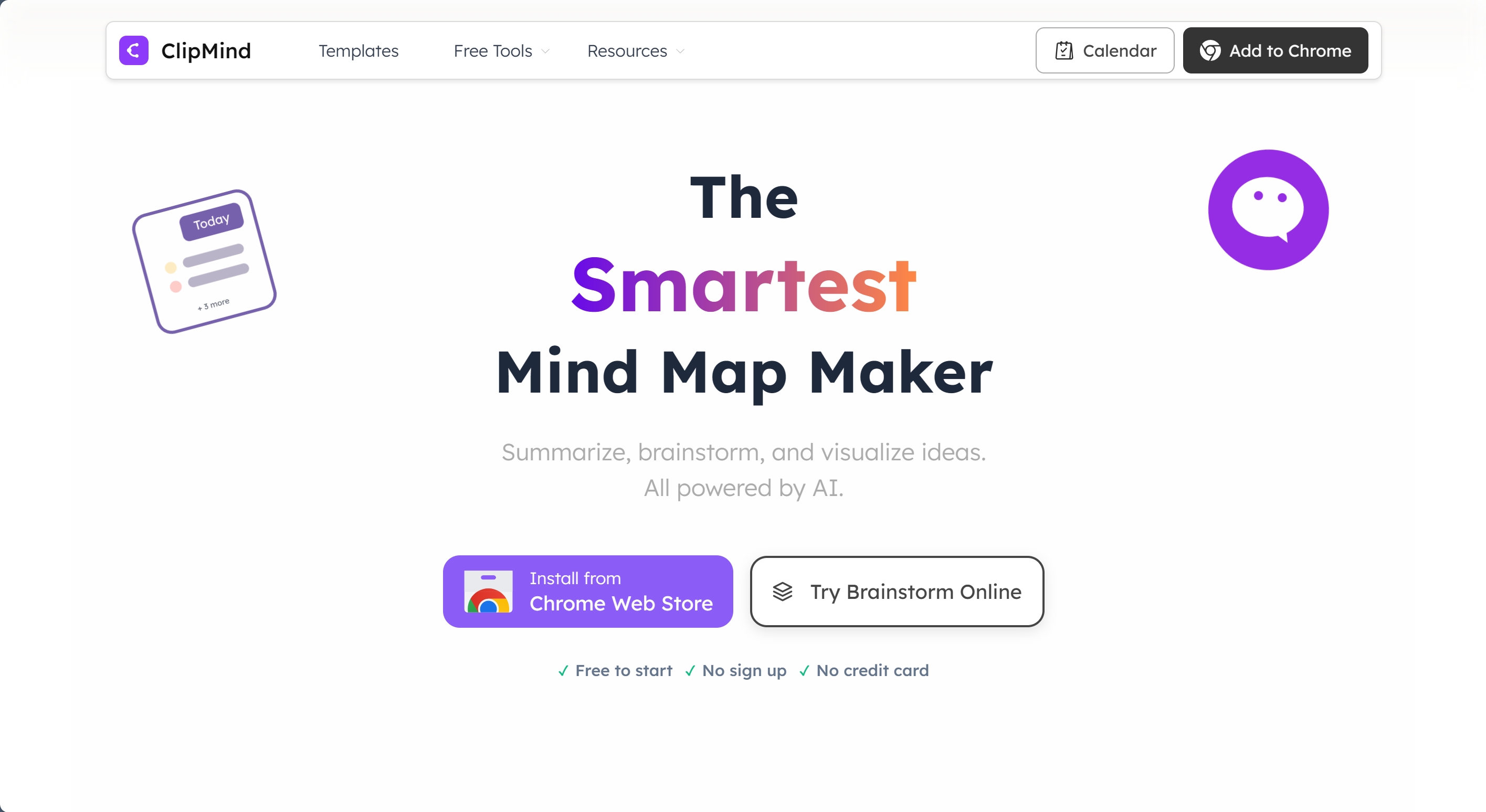
One-Click Webpage Summarization
ClipMind addresses the most common beginner struggle: starting from scratch. Instead of facing a blank canvas, users can instantly transform any webpage into a structured mind map. This feature is particularly valuable for students and researchers who often use mind maps to summarize textbooks, organize notes, and prepare for exams. The AI does the heavy lifting of extracting key points, allowing beginners to focus on understanding and organizing information rather than manual data entry.
Completely Free Editing and Export
Unlike many competitors that restrict basic functionality behind paywalls, ClipMind offers full editing capabilities and export options without any cost. This removes financial barriers that often prevent beginners from fully exploring mind mapping. You can freely modify nodes, rearrange structures, add personal insights, and export your work as SVG or Markdown files—all without creating an account or providing payment information.
Noise-Free AI Processing
ClipMind's summarization engine automatically filters out irrelevant content like advertisements, navigation menus, and boilerplate text. This ensures beginners receive clean, focused mind maps without needing technical cleanup skills. The tool prioritizes substantive content, making the resulting maps immediately useful for study, planning, or brainstorming sessions.
Dual-View Interface for Learning
The ability to toggle between Mind Map view and Markdown view helps beginners understand the relationship between visual organization and structured content. This dual perspective supports the learning process by showing how visual elements translate to textual hierarchies, reinforcing fundamental mind mapping principles through practical application.
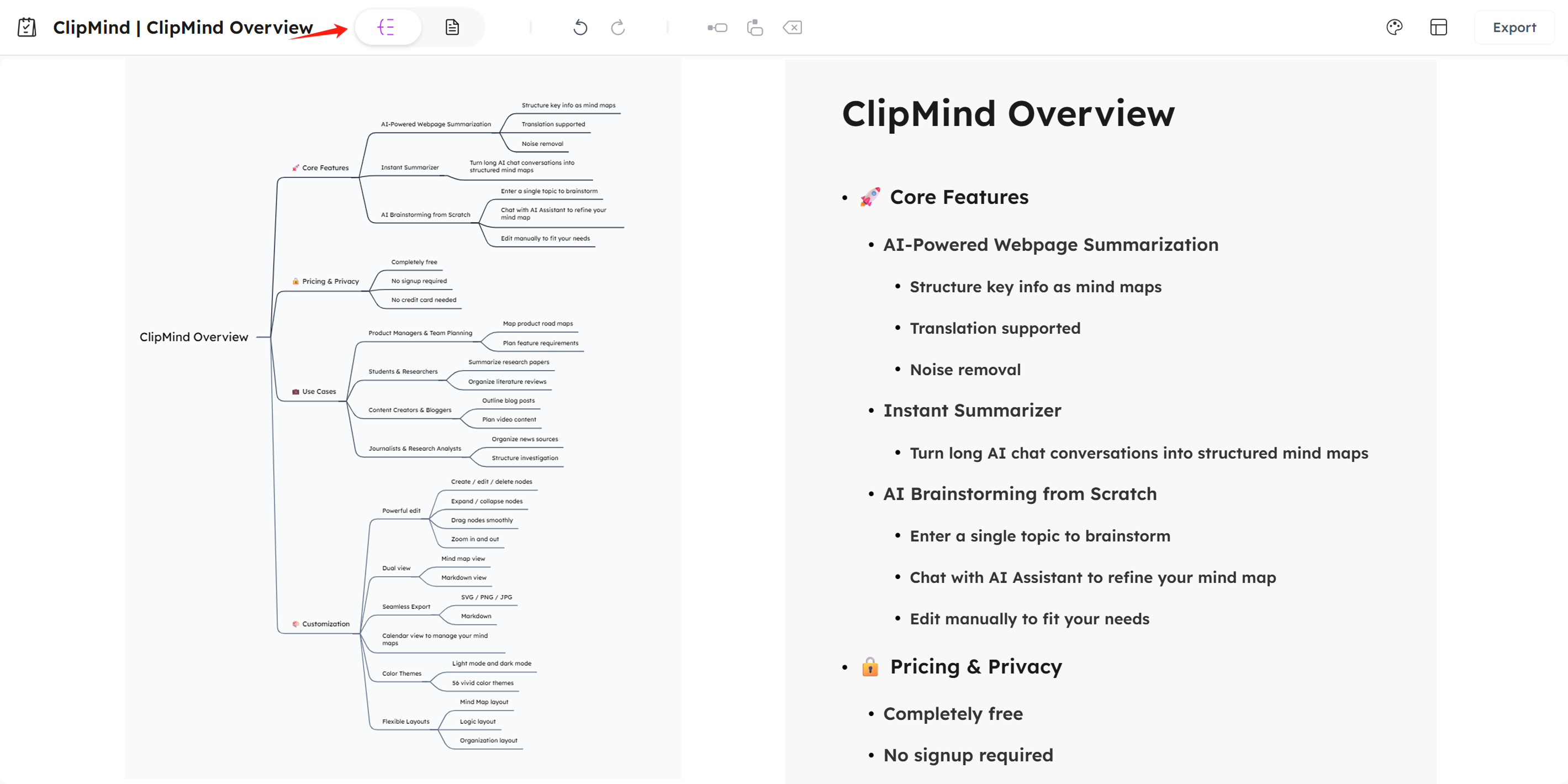
XMind: Classic Power with Modern Interface
Intuitive Drag-and-Drop Functionality
XMind balances professional capabilities with approachable design. The software features an intuitive drag-and-drop interface for effortless mind mapping that minimizes the technical learning curve. Beginners can quickly grasp the relationship between parent and child nodes through visual connections and straightforward manipulation tools.
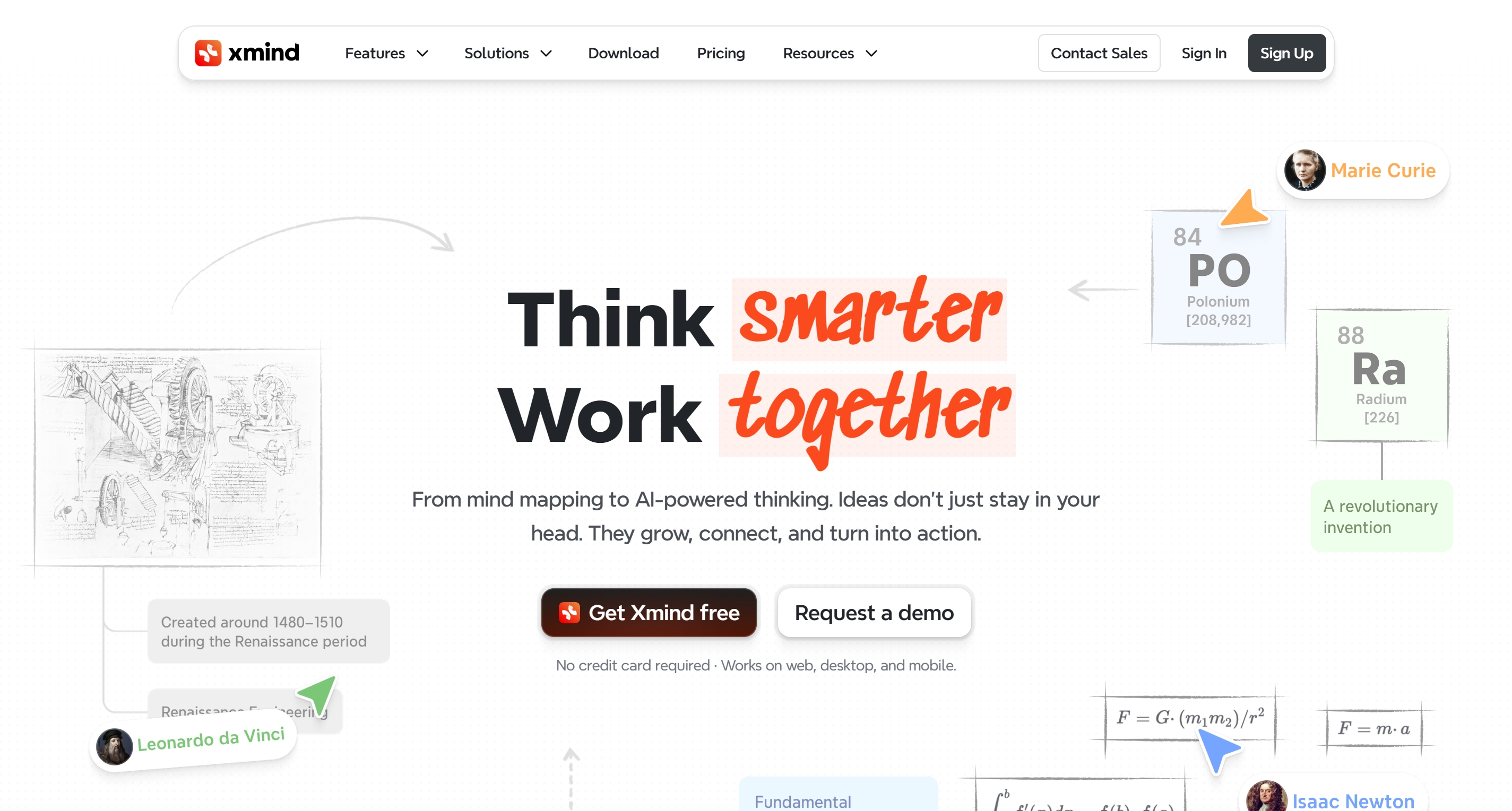
Extensive Template Library
For those unsure where to begin, XMind provides ready-made mind map templates that help users work faster and present ideas more effectively. These templates cover common use cases like brainstorming sessions, project planning, meeting notes, and study guides, giving beginners immediate structure and inspiration.
Flexible Pricing Structure
XMind's freemium model allows beginners to explore core functionality without financial commitment. 76% of XMind reviewers indicate the software offers good value for money, particularly appreciating its free version for basic use and affordable pro version with advanced features. This approach lets users grow into the tool as their skills develop.
MindMeister: Collaborative Mind Mapping
Real-Time Team Collaboration
MindMeister excels where individual tools fall short: group work. The platform enables multiple users to edit mind maps simultaneously, making it ideal for classroom projects, team brainstorming, and remote collaboration. Real-time collaboration features for team projects are particularly valuable for beginners working in educational or professional settings where shared understanding is crucial.
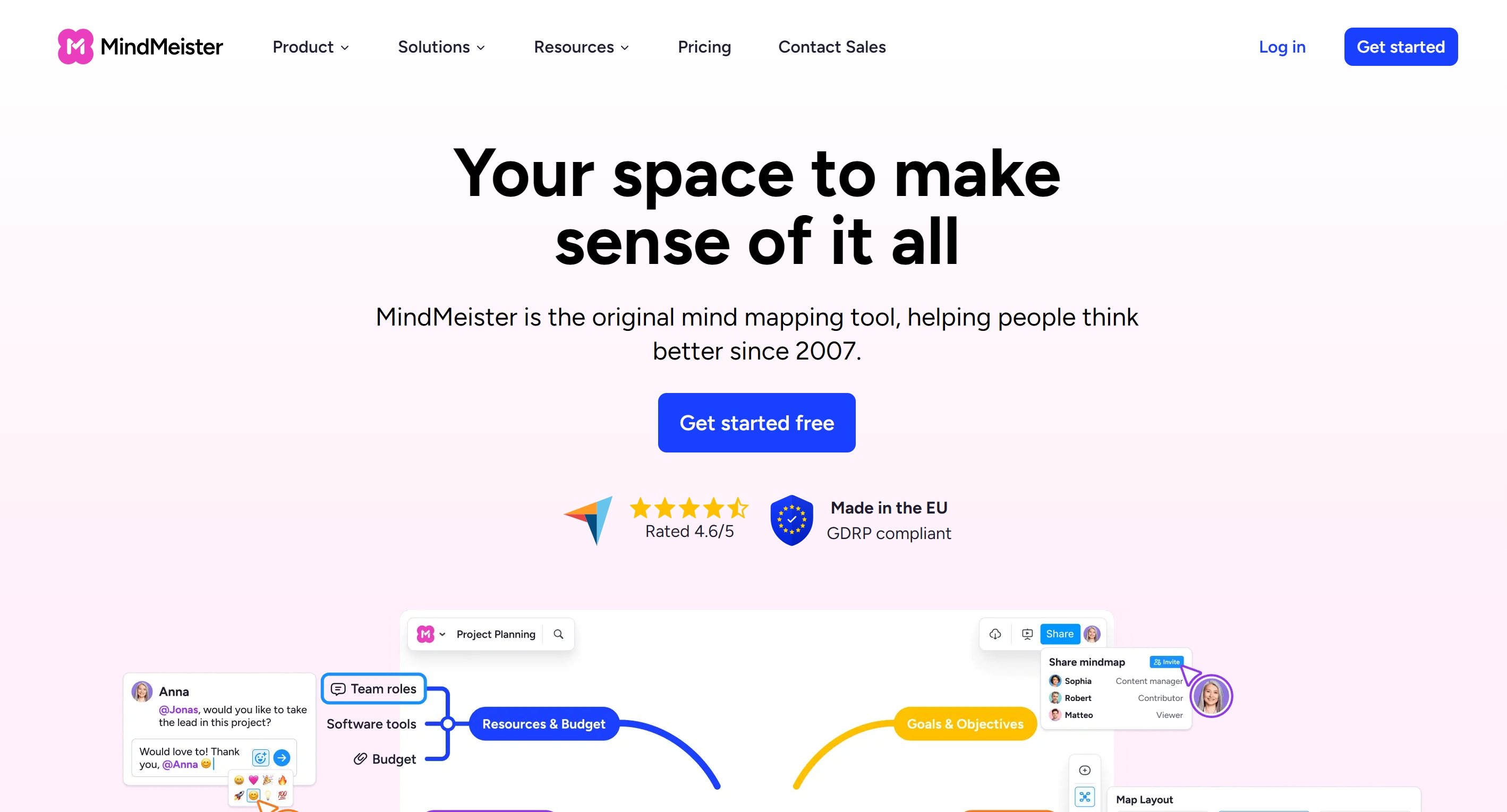
Educational Institution Adoption
MindMeister's accessibility makes it popular in academic environments. The tool offers education pricing with Campus plans designed for schools and universities, with pricing starting at $3/month per user. This institutional support often includes guided implementation, making it easier for student beginners to adopt the tool with proper support structures.
Generous Free Tier
Beginners can explore MindMeister's core functionality through a free plan that includes up to three mind maps and unlimited real-time collaborators. This allowance provides ample opportunity to understand the tool's value before considering paid upgrades, reducing the risk of investment in unfamiliar software.
Miro: Visual Workspace for Creative Minds
Infinite Canvas Approach
Miro's expansive digital whiteboard provides beginners with unlimited space for idea exploration. Users appreciate Miro as an infinite canvas loaded with tools designed for creative brainstorming that feels both liberating and structured. This approach encourages nonlinear thinking while maintaining organizational capabilities through flexible spatial arrangements.
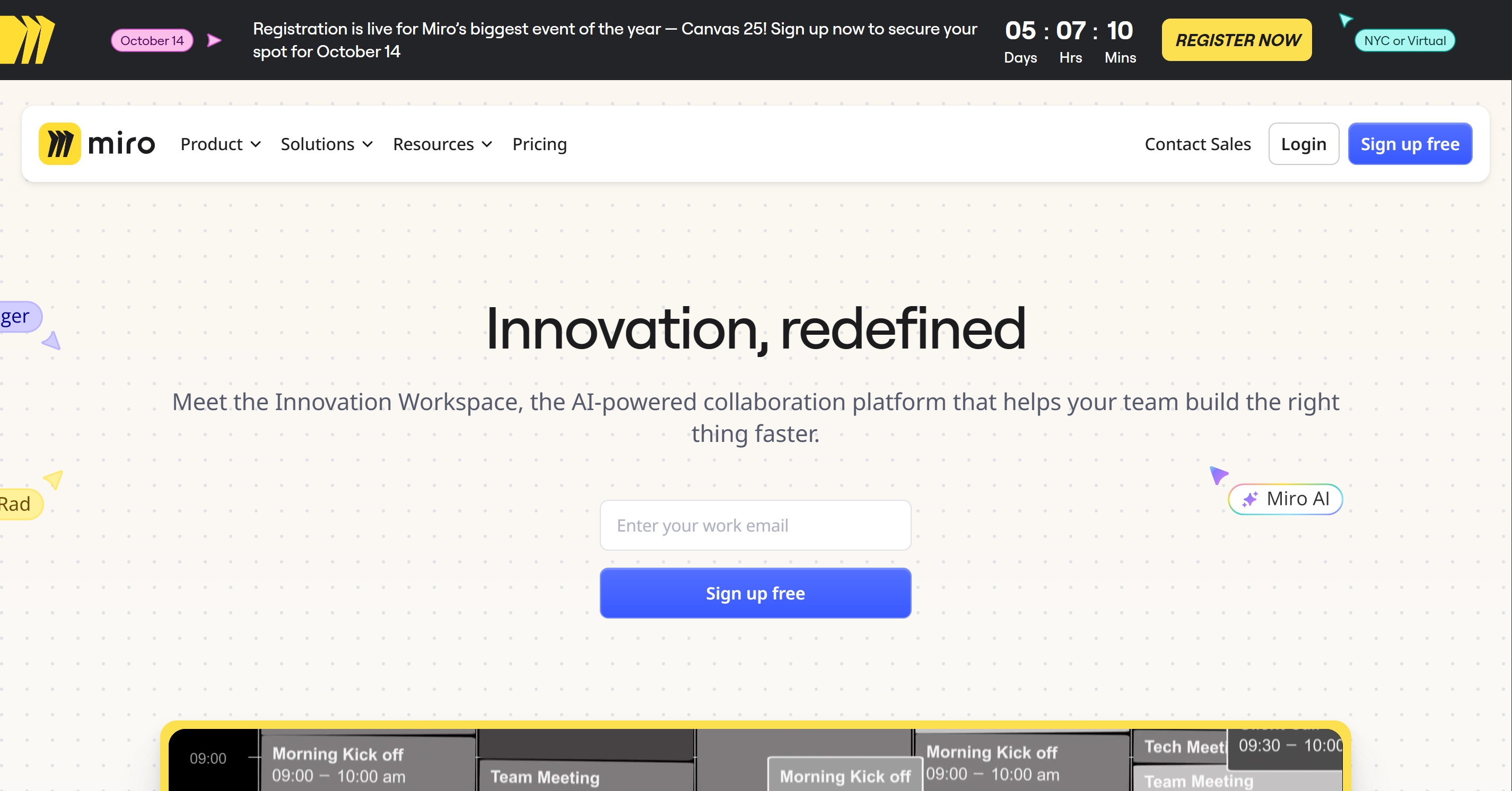
Template-Driven Starting Points
Miro reduces beginner anxiety through extensive template collections. The platform offers project planning mind map templates that streamline project management by mapping key project areas in a pre-structured format. These templates help beginners overcome initial uncertainty by providing proven structures for common use cases.
Integrated Tool Ecosystem
Beyond basic mind mapping, Miro connects visual thinking to practical outcomes. The platform's mind maps help with business planning, brainstorming, and organizing complex information through integration with complementary tools like sticky notes, diagrams, and presentation modes. This ecosystem approach shows beginners how mind mapping fits into broader workflows.
Coggle: Simple Web-Based Mapping
Automatic Layout Intelligence
Coggle eliminates manual formatting struggles through intelligent automatic organization. The tool makes it easy to create and share mindmaps and flowcharts, visualizing ideas simply for note-taking, brainstorming, and planning without requiring design skills. This automation allows beginners to focus on content rather than appearance, building confidence through immediate presentable results.
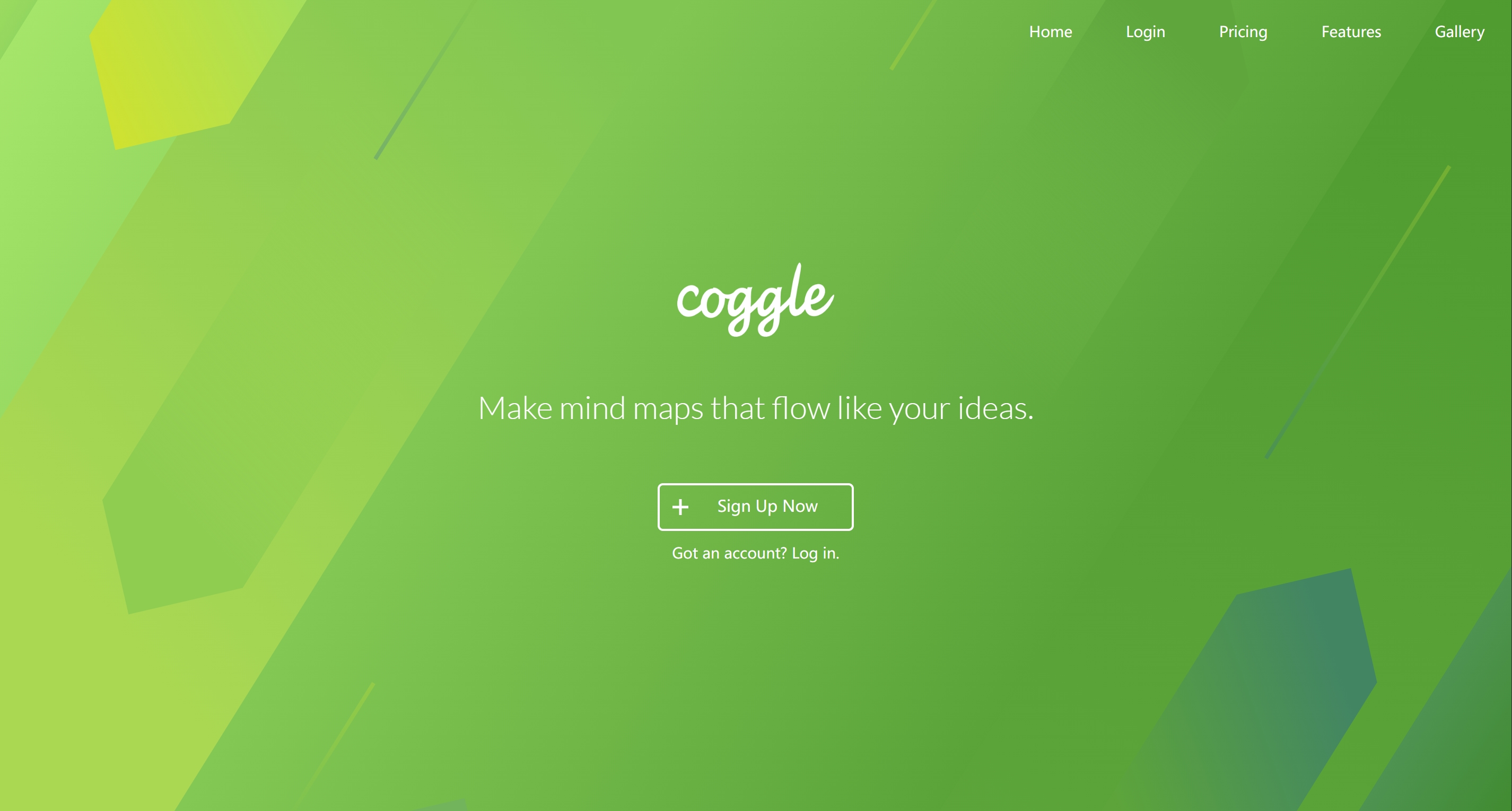
Straightforward Interface Design
With minimal toolbar options and clear visual hierarchy, Coggle presents one of the most approachable interfaces for absolute beginners. The platform prioritizes essential functions while hiding advanced features until needed, creating a progressive disclosure that matches natural skill development.
Free Plan Limitations
Coggle's accessibility comes with some constraints for free users. The platform includes up to three private diagrams and unlimited public diagrams in its free tier, which may suffice for casual users but could limit those requiring privacy for sensitive projects. Understanding these boundaries helps beginners set appropriate expectations.
MindNode: Apple Ecosystem Integration
Seamless Device Synchronization
MindNode excels for beginners invested in the Apple ecosystem. The tool offers full integration via iCloud that allows users to access and review mental outlines on any of their personal devices, creating a fluid experience across iPhone, iPad, and Mac. This continuity reduces friction for users who frequently switch between devices throughout their workflow.
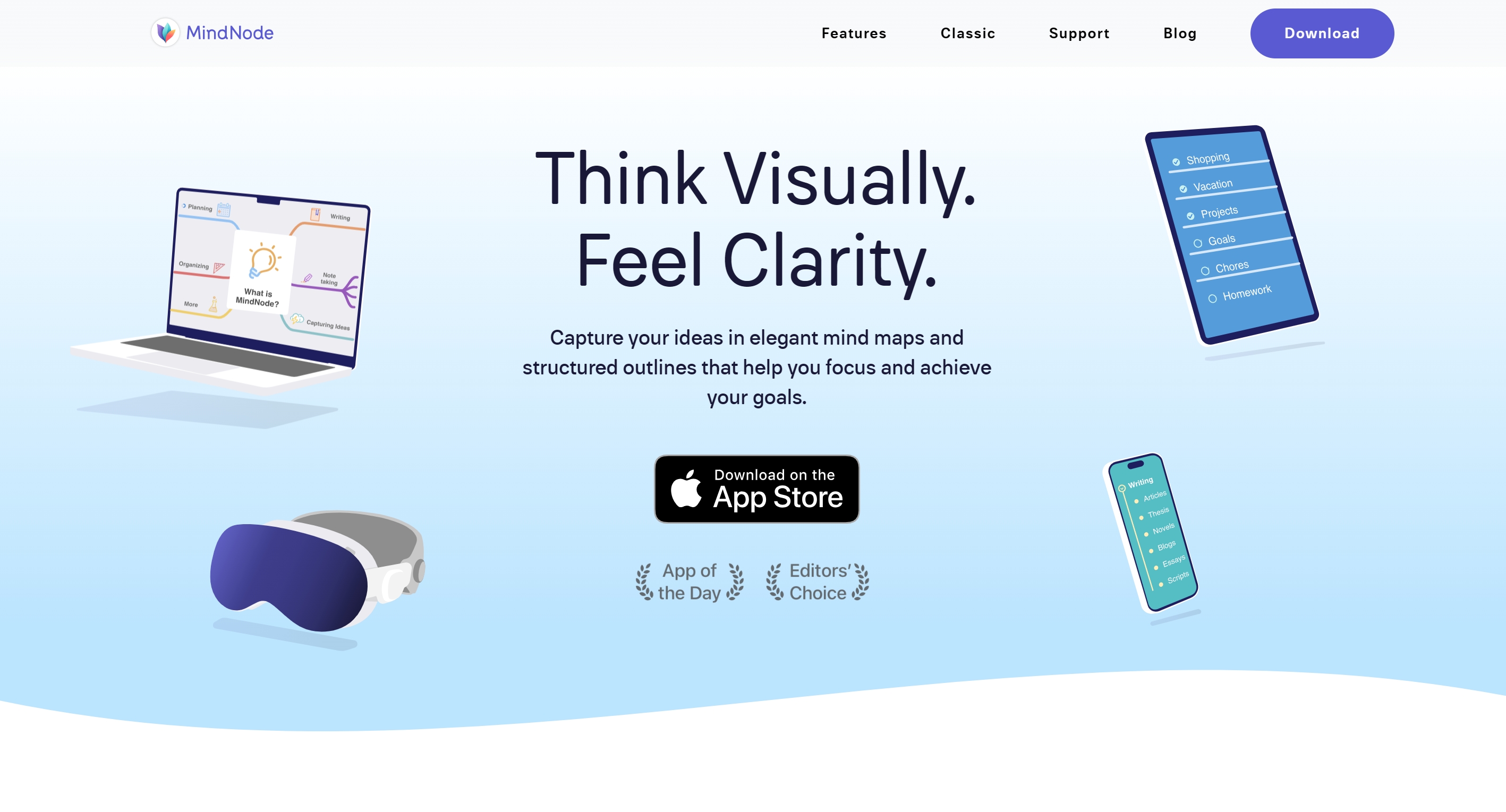
Focus Mode for Concentration
Beginners often struggle with information overload when building complex maps. MindNode's Focus Mode allows users to concentrate on specific branches while temporarily hiding unrelated content. This feature supports the beginner mind mapping tip of using keywords for clarity, with each node conveying a single idea by preventing visual distraction during deep work sessions.
Visual Style Customization
While maintaining simplicity, MindNode offers thoughtful design options that help beginners create visually appealing maps without professional design skills. The balance between aesthetic control and usability makes the tool particularly appealing to creative beginners who value presentation quality alongside functionality.
SimpleMind: Cross-Platform Simplicity
One-Time Purchase Model
In an era of subscription fatigue, SimpleMind offers refreshing pricing simplicity. The platform uses a one-time purchase per platform model with no monthly or yearly subscription fees, making budget planning straightforward for beginners. This approach is particularly valuable for students and casual users who prefer predictable costs without recurring financial commitments.
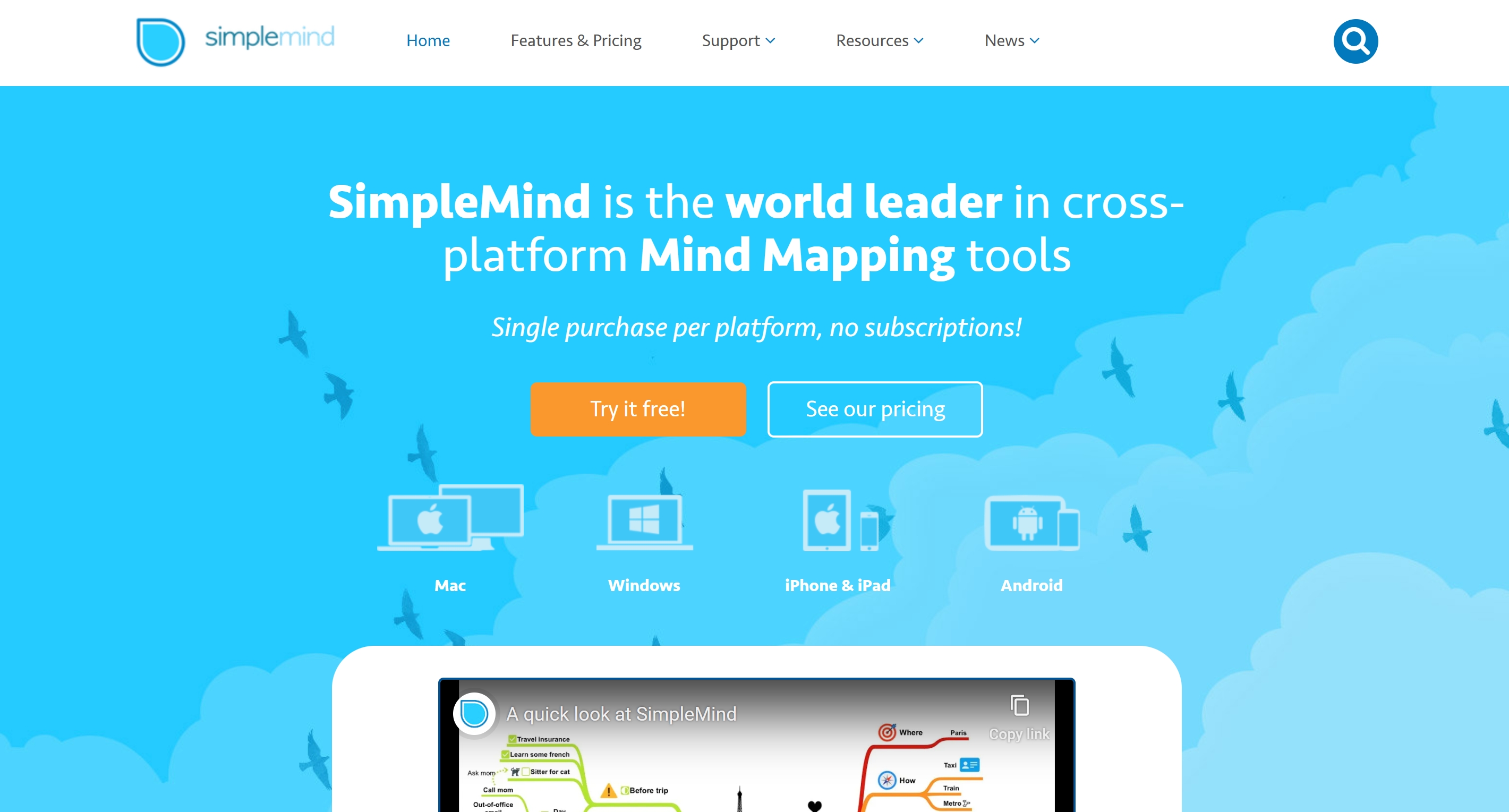
Offline Functionality
SimpleMind supports reliable offline use, addressing a key need for students who benefit from offline mind mapping tools to organize thoughts without internet access. This capability ensures continuous productivity regardless of connectivity, making the tool suitable for classrooms, travel, and areas with unreliable internet service.
Intuitive Touch Interface
The software's mobile applications feature touch-optimized interfaces that feel natural on tablets and smartphones. This design approach acknowledges that many beginners prefer creating and consuming mind maps on portable devices where touch gestures replace complex menu navigation.
Ayoa: AI-Enhanced Mind Mapping
Intelligent Idea Generation
Ayoa incorporates AI assistance specifically designed for beginners struggling with initial idea formation. The platform's AI-powered tools designed for brainstorming, strategic planning, and project management help overcome blank canvas anxiety by suggesting related concepts and structural approaches based on initial input.
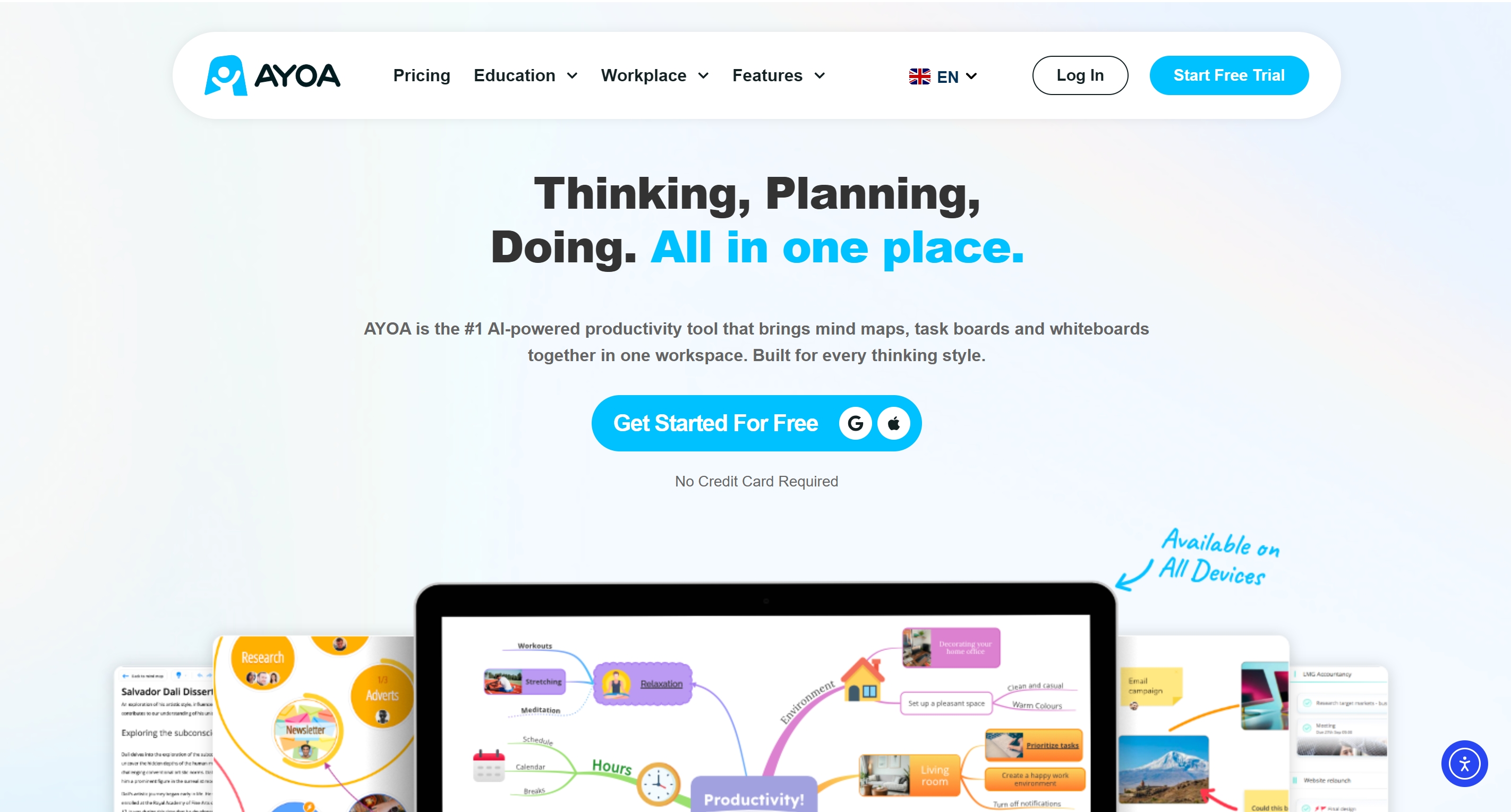
Integrated Task Management
Unlike pure mind mapping tools, Ayoa connects visual thinking to actionable outcomes. The platform transforms ideas into action instantly, boosting productivity, sparking creativity, and improving memory through visual organization, showing beginners how mind maps translate to real-world results through integrated task assignment and progress tracking.
Visual Thinking Reinforcement
Ayoa emphasizes the cognitive benefits of mind mapping through features that reinforce visual learning patterns. This approach aligns with how mind mapping engages both logic and creativity, boosting comprehension, recall, and collaboration by making abstract relationships concrete and memorable.
Lucidchart: Professional-Grade Visual Tools
Structured Approach to Visual Thinking
Lucidchart introduces beginners to professional diagramming standards through its mind mapping functionality. The tool allows editing of shapes, sizes, colors to organize data into visual maps, making it easier to zoom out and see information visually, teaching fundamental principles of information design alongside mind mapping techniques.
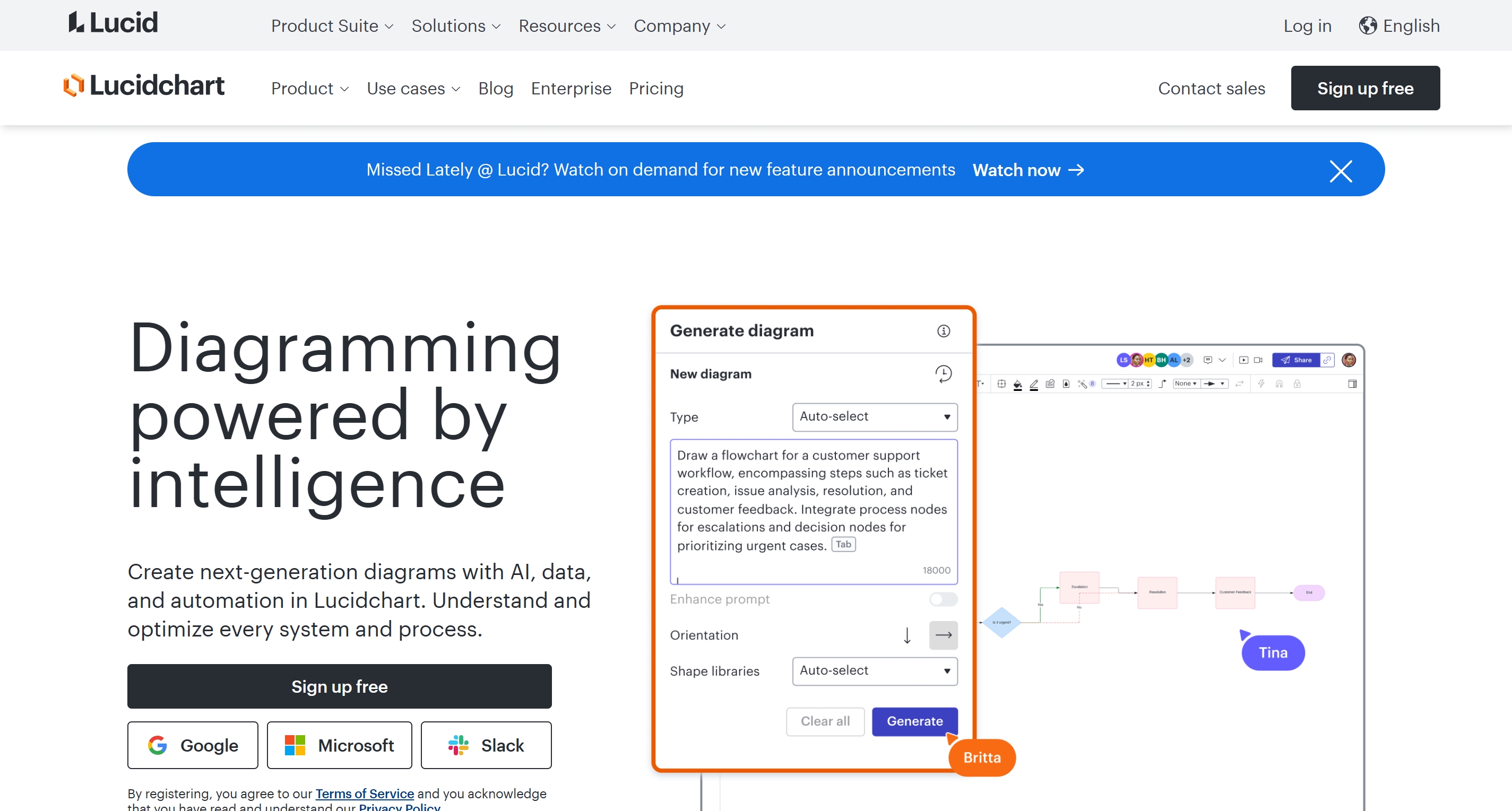
Educational Integration
Lucidchart's design supports classroom adoption, with features designed to help teachers engage students in learning processes. This educational focus makes it particularly suitable for academic beginners who need to align mind mapping with institutional learning management systems and grading frameworks.
Enterprise-Grade Collaboration
While more complex than purely beginner-focused tools, Lucidchart introduces professional collaboration standards that prepare users for workplace environments. The platform's mind map creator helps structure and share ideas on an infinite canvas, with sharing capabilities even for non-Lucidchart users, building skills transferable to professional settings.
Whimsical: Rapid Prototyping and Mapping
Accelerated Learning Curve
Whimsical prioritizes immediate productivity through interface design that has a shorter learning curve and displays the most common tools for whiteboard and editing dynamics. This approach gets beginners creating functional mind maps within minutes rather than hours, building confidence through rapid success.
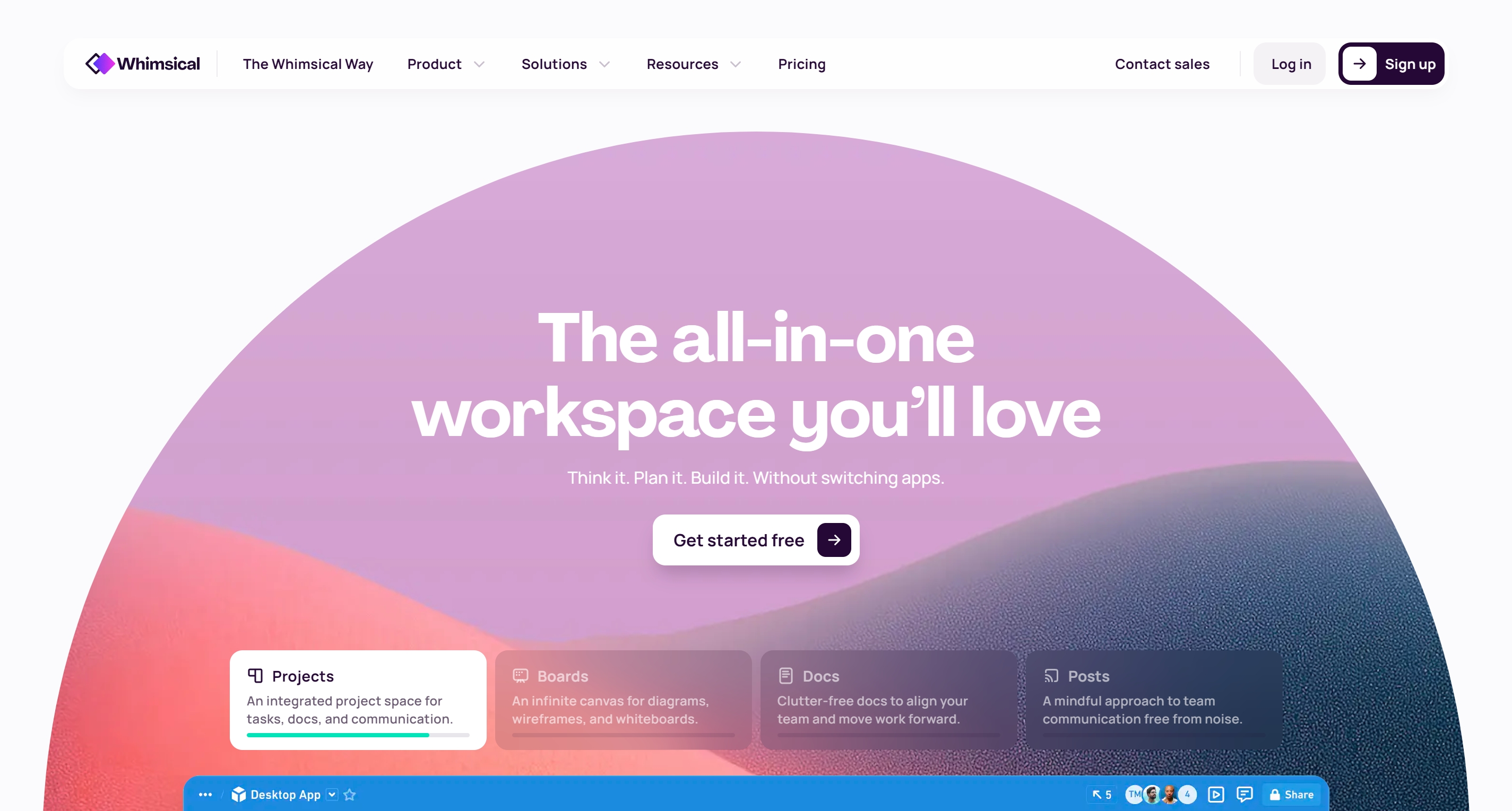
Purpose-Specific Templates
The platform offers targeted templates that address common beginner use cases directly. Whimsical provides templates for brainstorming sessions, onboarding user flows, and project proposals that help beginners overcome initial direction uncertainty by providing industry-tested starting points for specific scenarios.
Integrated Visual Toolset
Whimsical connects mind mapping to complementary visual thinking tools like flowcharts, wireframes, and sticky notes. This integration demonstrates how simple mind map templates help beginners craft diagrams to visualize complex information, outline product features, and summarize dense content as part of broader visual communication strategies.
Buying Advice: Choosing Your First Mind Mapping Tool
Assess Your Primary Use Case
Beginner tool selection should start with honest self-assessment of primary needs. Mind mapping serves as a visual information management tool that helps structure, organize, memorize, arrange, brainstorm and learn information effectively, but different tools optimize for different aspects of this spectrum. Students might prioritize research summarization and study aids, while project managers might need collaboration and task integration.
Consider Your Technical Comfort Level
Be realistic about your willingness to learn complex software. Tools like ClipMind and Coggle offer immediate usability with minimal learning investment, while platforms like Lucidchart provide greater long-term capability at the cost of initial complexity. Match the tool's learning curve to your available time and patience for skill development.
Evaluate Collaboration Requirements
If you'll primarily work alone, individual-focused tools like SimpleMind or XMind may suffice. However, if you anticipate team projects or classroom collaboration, prioritize tools like MindMeister or Miro with robust sharing and co-editing capabilities. Mind mapping helps improve team collaboration and problem-solving by organizing ideas visually, but only if the tool supports your specific collaboration patterns.
Understand Pricing Long-Term
Look beyond initial free tiers to understand total cost of ownership. Subscription models provide continuous updates but create ongoing expenses, while one-time purchases like SimpleMind offer cost predictability but may lack feature evolution. Consider how flexible pricing plans and reliable customer service play crucial roles in tool selection for beginners with different budget constraints and growth expectations.
Test Multiple Options
Most quality mind mapping tools offer free trials or generous free tiers. Take advantage of these opportunities to experience workflow compatibility firsthand. Pay attention to how each tool feels during actual use rather than relying solely on feature comparisons. The projected growth rate of mind mapping tools from 2025 to 2026 is expected to reach 180%, meaning you have ample opportunity to switch tools as your needs evolve and new options emerge.
Conclusion
Choosing your first mind mapping software doesn't need to be overwhelming. The tools we've explored each offer unique approaches to visual thinking, from ClipMind's AI-powered simplicity to XMind's classic functionality and MindMeister's collaborative strengths. What matters most is selecting a tool that matches your immediate needs while supporting your growth as a visual thinker.
Remember that the best mind mapping software is the one you'll actually use consistently. Whether you prioritize cost-free accessibility, collaborative features, or AI assistance, there's a beginner-friendly option that can transform how you organize ideas and information. The growing landscape of AI-powered mind map generators that turn scattered thoughts into clear visual maps in seconds means there's never been a better time to start your mind mapping journey.
Learn More
- ClipMind Chrome Extension - Install the free browser extension for instant webpage summarization
- Mind Mapping Fundamentals Course - Structured approach to learning core mind mapping skills
- Visual Thinking Strategies - Advanced techniques for effective mind mapping
- Collaborative Mind Mapping Guide - Best practices for team-based visual thinking
FAQs
-
What's the easiest mind mapping software for absolute beginners? ClipMind and Coggle offer the most intuitive starting points because they automate complex tasks and minimize interface complexity. ClipMind's one-click webpage summarization is particularly helpful for overcoming initial direction uncertainty.
-
Are free mind mapping tools actually usable or just limited trials? Several tools like ClipMind, Coggle, and MindMeister offer fully functional free tiers that support legitimate mind mapping needs. ClipMind is unique in providing complete editing and export capabilities without any pricing tiers.
-
How long does it take to learn basic mind mapping software? With beginner-focused tools, you can create your first functional mind map within 15-30 minutes. Most users become comfortable with core features within a few hours of practice, with advanced capabilities developing over weeks of regular use.
-
Can I use mind mapping software on multiple devices? Most web-based tools work across devices through browsers, while native applications like MindNode and SimpleMind offer cross-platform compatibility. ClipMind functions as a Chrome extension, making it accessible anywhere you use the Chrome browser.
-
Is my data private when using free mind mapping tools? Privacy policies vary significantly between tools. ClipMind processes data locally without requiring logins, while web-based tools may store your content on their servers. Always review privacy policies, especially for sensitive information.
-
What's the main advantage of AI-powered mind mapping? AI assistance helps overcome blank canvas anxiety by providing starting structures and content suggestions. Tools like ClipMind and Ayoa can summarize existing content or generate related ideas, reducing the mental load of initial organization.
-
Can I switch between different mind mapping tools later? Most tools support export formats that allow migration between platforms, though some formatting may require adjustment. Starting with tools that offer standard export options like SVG or Markdown provides greater future flexibility.
H2s_count: 14 words_count: 2987 reading_time: 12
